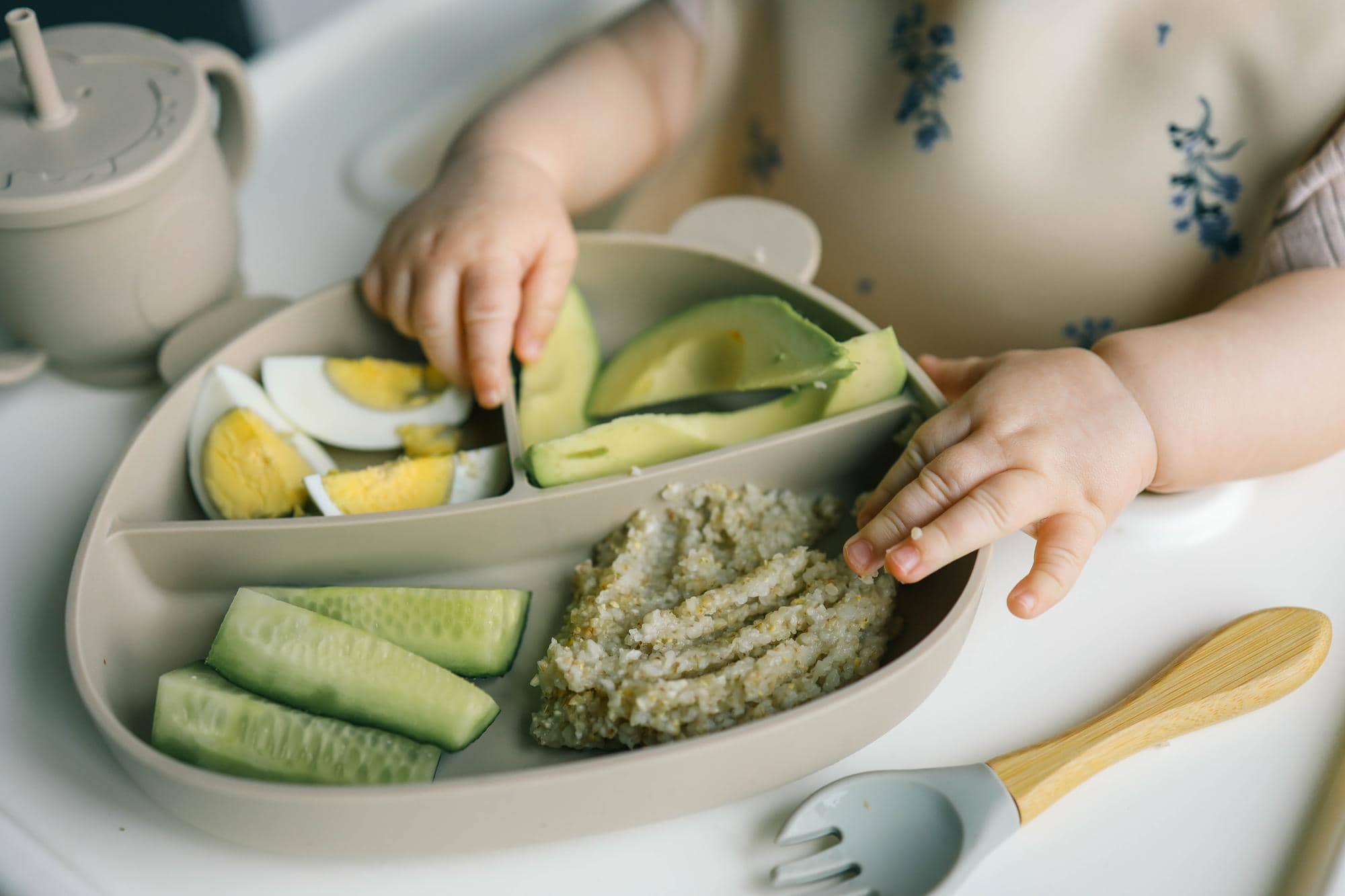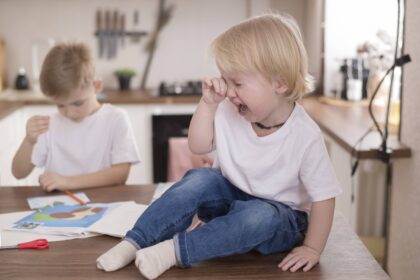Hi moms! Let's be real – sibling tantrums are just part of the parenting journey, aren't they? We all know those moments! But when those tantrums are between siblings, it can sometimes feel like it throws the whole family off balance, creating a tense vibe at home. And honestly, who needs that? That's why learning to guide our kids through these sibling squabbles constructively is so important. It's not just about keeping the peace now; it's about teaching them crucial life skills for the future.
It’s actually fascinating – research even suggests that having siblings can have some amazing health benefits for our kiddos! They might be less prone to allergies, obesity, and even depression. Plus, think about all those social skills they're picking up – cooperation, problem-solving – all learned right there in the home. So, let's dive into how tantrums impact sibling dynamics and, more importantly, what practical strategies we can use to help our children manage their emotions and find peaceful resolutions. We're in this together!
Understanding How Tantrums Affect Siblings
We all know that kids bickering is pretty normal, but when tantrums become a regular thing between siblings, it can really affect their relationship. Think about it – when one of our little ones is having a meltdown, it can be upsetting for their siblings too. They might feel scared, worried, or even a bit resentful.
Seeing a sibling lose it, especially if it involves yelling or hitting, can be really unsettling. Kids can feel unsafe or just overwhelmed by all the big emotions flying around. It’s tough to watch, and even tougher for them to experience.
Sometimes, kids in families where things are a bit chaotic might even take out their frustrations on their siblings because it feels safer than expressing those feelings to us, their parents. This can, unfortunately, turn into a cycle of negativity and bad feelings between siblings, which is definitely not what we want.
And here's something else to consider: constantly being around tantrums can make kids think that disrespectful or even abusive behavior is normal. This can sadly affect their relationships later in life. They might end up thinking that negativity is just something you have to put up with and struggle to speak up for what they need.
This can show up in different ways. Some kids might become super quiet and withdrawn, trying to disappear in family situations. Others might start acting out to get attention, just trying to cope with all the chaos at home. It's heartbreaking to think about, but kids who grow up with a sibling who has frequent tantrums might be more likely to accept unhealthy levels of negativity in their adult relationships. It’s so important to address this early on.
Remember, every child is unique! A child's personality really plays a big role in how they handle anger and frustration. Some kids are just naturally more impulsive or get frustrated more easily, which can make them more prone to tantrums. It's not about blaming them; it's about understanding them.
Helping Our Children Manage Big Emotions
Let's face it, kids feel ALL the emotions, right? And learning to handle those feelings is such a crucial life skill. Think of emotional regulation as like having an internal thermostat for feelings. It helps kids recognize, understand, and express their emotions in healthy ways.
Kids who are good at managing their emotions are just better equipped to handle tough situations. They can cope with frustration, calm themselves down when upset, and respond to challenges in a positive way. This is a skill that will benefit them for life!
And guess what? We, as parents, are key players in helping our kids build these emotional regulation skills. Here are some strategies that have worked for me and might help you too:
Strategies for Emotional Regulation
| Strategy | Description |
|---|---|
| Validate their feelings | Acknowledge and accept what your child is feeling, no judgment here! Let them know it’s okay to feel angry, sad, frustrated – all those emotions are valid. Sometimes just hearing “It's okay to feel sad” can make a world of difference. |
| Identify the emotion | Help your child name what they are feeling. “Are you feeling frustrated right now?” Putting a name to the feeling helps them become more aware of their emotional state and understand what they're going through. |
| Teach coping strategies | Introduce them to simple calming techniques. Deep breaths are amazing! Taking a break, drawing, listening to music – find what works for your child. My 8-year-old loves to draw when she's feeling overwhelmed. |
| Model emotional regulation | This is a big one, moms! Our kids are always watching us. Show them how YOU manage your own emotions when things get tough. Take a deep breath when you're stressed, talk about your feelings calmly. They learn so much by watching us. |
| Create a “calm down corner” | Set up a cozy, quiet space where your child can go when they feel overwhelmed. Think soft blankets, pillows, favorite books, maybe a stuffed animal. It's their safe space to de-escalate and regroup. |
| Create a “coping kit” | Prepare a little box or bag filled with things that help your child self-soothe. Stress balls, fidget toys, calming pictures, a favorite small toy – whatever brings them comfort. It's like a little emotional first-aid kit! |
| Use books, shows, and movies | This is a fun one! Watch age-appropriate shows or read books together that talk about different emotions. Pause and chat about how the characters are feeling and why they might be reacting the way they are. It's a great way to help kids understand and process their own emotions. |
One thing I've learned is that strict punishment can actually backfire when it comes to emotional regulation. Harsh discipline can make emotional regulation worse and even lead to more aggression. Instead, let's focus on positive vibes! Praise and reward the behaviors we want to see more of. Catch them being good, and let them know you noticed!
Fostering Empathy and Understanding
Empathy – it's like the superpower of relationships! It's all about understanding and sharing how someone else is feeling. It's HUGE for reducing conflict and building positive sibling bonds. When our kids can put themselves in their sibling's shoes, they're way more likely to respond with kindness and understanding when disagreements pop up.
Here are some ways we can grow that empathy muscle in our children:
- Using real-life situations: When squabbles happen (and they will!), use it as a learning moment. Encourage them to think about the other sibling's perspective. “How do you think your sister felt when you took her doll?” or “How would you feel if someone did that to you?” These questions are gold!
- Modeling empathy: Again, they are watching us! Show them what empathy looks like by being compassionate and understanding in your own interactions. If your child is upset, offer comfort, listen, and say things like, “I understand why you're feeling sad.”
- Reading stories: Books are amazing for teaching empathy. Choose stories that explore different emotions and viewpoints. Talk about how the characters are feeling and why they're acting a certain way. It helps kids realize that everyone has feelings, and those feelings matter.
- Role-play: Kids love pretend play! Act out scenarios where they can practice understanding different feelings. Maybe pretend one sibling takes a toy, and then talk about how each child felt in that situation.
- Encourage helping behaviors: Cheer on those acts of kindness! When you see siblings helping each other, praise it! “I saw you helped your brother with his blocks, that was so kind of you!” This reinforces positive behavior.
- Holding family meetings: Regular family chats can be a great way to talk about conflicts and build empathy. Give everyone a chance to share their thoughts and really listen to each other. It teaches valuable communication skills.
- Modeling calm behavior during conflicts: This is tough, but so important. When siblings are arguing, try to stay calm yourself. Show them how to handle disagreements in a constructive way. Our reactions set the tone for them.
Creating a Structured Environment
Structure can be our friend, moms! A structured home environment can actually minimize sibling conflict and help create more positive interactions. Clear rules and expectations give kids a sense of security and predictability, which can really reduce those little disagreements that can escalate.
Think about it – sibling rivalry often comes from kids wanting attention and feeling valued within the family. When we create a structured environment, it helps kids feel more secure and valued, so they don’t feel the need to constantly compete for our attention. It’s all about creating a sense of stability.
Here are some ways to bring more structure into our homes:
- Establish family rules: Get the kids involved in making the rules! Talk about what's acceptable behavior and what the consequences are for breaking the rules. Write them down and put them up somewhere everyone can see them.
- Define family values: Chat about what's important to your family – respect, kindness, cooperation. Maybe even create a little “family manifesto” that reflects these values. It helps everyone get on the same page.
- Set boundaries: Teach kids about personal space and belongings. Encourage them to ask permission before borrowing things and have consequences for not respecting those boundaries. “Ask before you borrow” is a good mantra.
- Encourage problem-solving: Help them learn to communicate their needs and work together to find solutions. Teach them to express their feelings calmly, listen to each other, and brainstorm ideas together.
- Establish routines: Routines are lifesavers! Consistent routines for meals, bedtime, playtime – they create predictability and reduce stress, which can minimize triggers for tantrums.
- Set clear rules and expectations: Clearly define what's expected of them and be consistent in enforcing those rules. This avoids any feelings of favoritism or unfairness. Consistency is key!
- Present a united front as parents: When we, as parents, are on the same page with discipline and conflict resolution, it creates stability for the kids. This helps reduce sibling rivalry and makes for a much more peaceful family vibe.
Individual Attention and Reducing Competition
While teamwork and unity are great, it’s also super important to give each child individual attention. This makes each of them feel special and valued in their own right, which lessens the need to compete for attention. Every child needs to feel seen and heard for who they are.
Here are some ways to make sure each child gets that individual spotlight:
- Spend quality time with each child: Schedule one-on-one time with each child regularly. Even 15 minutes of focused attention can make a big difference. Read together, play a game, just chat – make it special time just for them.
- Encourage individual activities: Support their unique interests and passions. If one loves soccer and the other loves art, encourage those individual pursuits. It helps them explore their strengths and talents.
- Avoid comparisons: This is a big one, moms. Resist the urge to compare your children to each other. Celebrate their individual achievements and strengths. Each child is unique and amazing in their own way.
Specific Strategies for Navigating Conflict
Okay, so when those sibling spats do happen (and they will!), here are some specific strategies we can use to help them navigate the disagreements peacefully:
- Teach the stoplight: This is a fun visual tool! Explain that when they feel angry, they should imagine a stoplight. Red means “stop” – take deep breaths to calm down. Yellow means “think” – think about the problem and solutions. Green means “go” – try a solution. Red, Yellow, Green – it’s easy for kids to remember!
- Model empathy: Again, back to modeling! Show them how to listen and understand each other's feelings. When they're arguing, help them see it from the other sibling's point of view. “Maybe your brother is sad because he was playing with that toy.”
- Practice talking about feelings: Encourage “I feel” statements. “I feel sad when you take my toy.” This helps them express their needs without blaming or name-calling.
- Brainstorm solutions: Help them come up with ideas to solve the problem together. “What can we do to fix this?” Then, talk about the good and bad points of each idea and choose one that works for everyone.
- Neutralize the situation: If things get too heated, separate them and give them a cooling-off period. Time apart helps everyone calm down before trying to sort things out.
- Gather data: Once everyone is calm, listen to each child's side of the story without jumping to conclusions. Let them express their feelings and explain what happened. Listen without judgment.
- Define the problem: Help them clearly understand what the issue is. “So, the problem is that you both want to play with the same car?” Make sure everyone agrees on what the problem actually is.
- Teach what NOT to do: Clearly explain what behaviors are not okay during conflicts – name-calling, hitting, interrupting, refusing to listen, insults. Set those boundaries!
- Time-outs for everyone: Sometimes, when tensions are super high, a time-out for everyone – kids AND parents – can be helpful. Everyone gets a chance to take a break, calm down, and come back to the situation with a clearer head.
Encouraging Positive Sibling Interactions
While some conflict is just part of sibling life, we can definitely encourage more positive interactions. Let's focus on building those good sibling bonds!
- Observe and support: Pay attention to what your kids enjoy doing together and make opportunities for those activities. Games, building forts, reading – whatever they enjoy as a team.
- Promote cooperation: Encourage teamwork! Give them tasks or projects they can work on together – cleaning up their toys, helping with dinner, working on a school project.
- Create shared experiences: Plan family activities that encourage teamwork and bonding. Outings, family game nights, movie nights – create those fun memories together.
- Praise positive interactions: When you see kindness, sharing, and cooperation between siblings, point it out and praise it! “I loved seeing you share your crayons with your sister, that was so kind!” Positive reinforcement works wonders.
- Talk about siblings as friends: Encourage them to see their siblings as friends and sources of support. “Your brother is always there for you, isn't he?” Help them build that positive connection.
- Reframe disagreements: Help them see that even disagreements can be learning opportunities for figuring out how to solve problems together. It’s all part of learning to get along in the world.
Conclusion
Tantrums and sibling squabbles are definitely normal parts of family life. But by understanding how tantrums affect siblings and using these strategies, we can help our kids manage their emotions, develop empathy, and learn to resolve disagreements peacefully. Creating a structured home, teaching conflict resolution skills, and encouraging positive interactions are all key to building strong sibling relationships that will benefit our children for their whole lives.
These strategies really do work together to create a supportive approach to managing tantrums and sibling conflict. It's not always easy, and there will be challenging days, but remember that patience and consistency in your efforts will help your children learn to navigate conflict and build those strong, lasting bonds with their siblings. We’ve got this, moms!
How do you handle sibling squabbles in your home? Share your tips in the comments below! Let's support each other on this journey!











